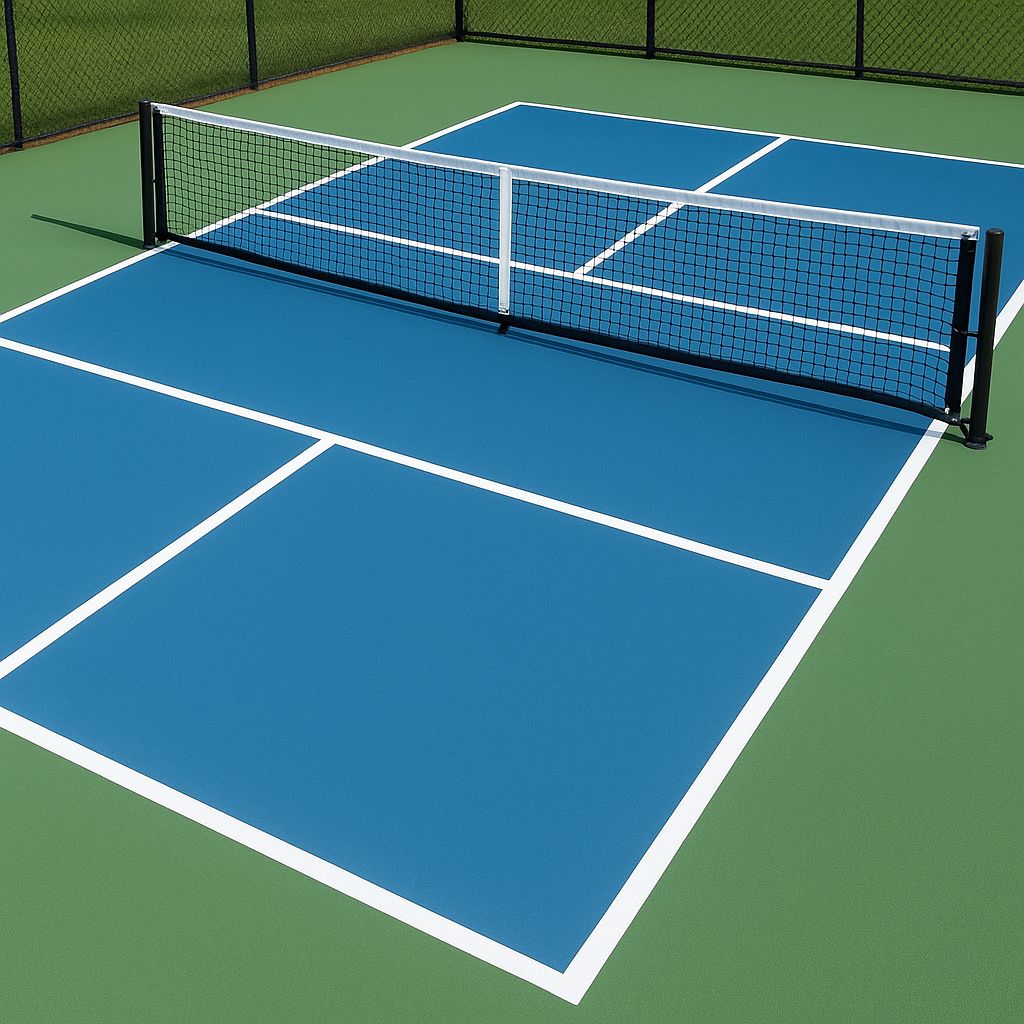Pickleball has evolved from a casual backyard game to one of the fastest-growing sports across the world, including India. Its rapid rise has led to an increased demand for high-quality outdoor pickleball court flooring that ensures consistency, durability, and excellent ball bounce. Whether for professional clubs, schools, or community parks, the flooring plays a vital role in shaping the performance, safety, and longevity of the court.
This guide explains everything a builder or player needs to know about pickleball court flooring, surface materials, and the importance of choosing certified pickleball court manufacturers.
Understanding Pickleball Court Flooring Basics
The foundation of any great pickleball court lies in its flooring. The pickleball court flooring determines how the ball bounces, how players move, and how well the surface withstands changing weather conditions.
For outdoor courts, materials must resist UV exposure, heavy rainfall, and heat while maintaining grip and safety. Among various options, synthetic acrylic systems have become the most preferred choice due to their all-weather adaptability and consistent performance.
Common Pickleball Court Materials
When selecting pickleball court material, builders and consultants evaluate factors like cost, maintenance, and surface behavior. Below are the main materials used:
A. Synthetic Acrylic Flooring
Acrylic flooring is the most popular outdoor pickleball court flooring material. It offers a uniform, slip-resistant surface that performs consistently in all weather conditions.
- Advantages: UV-resistant, customizable in colors, low maintenance, and excellent ball bounce.
- Ideal For: Outdoor facilities, schools, and club-level courts.
B. Polypropylene (PP) Tiles
These modular interlocking tiles are quick to install and suitable for temporary or multi-purpose courts.
- Advantages: Portable, weather-resistant, easy to replace.
- Drawback: Uneven ball bounce compared to acrylic surfaces.
C. Asphalt or Concrete Base
Every court begins with a sturdy base. Asphalt or reinforced concrete provides the essential structural foundation before applying the layers.
- Advantages: Long-lasting and cost-effective.
- Drawback: Needs resurfacing periodically to maintain smoothness.
Pickleball Court Surface Material Layers
Professional pickleball court manufacturers typically build a layered system for outdoor installations. Each layer serves a unique function to enhance play and durability:
- Concrete/Asphalt Base: The structural platform providing strength and slope for drainage.
- Acrylic Resurfacer: Levels imperfections and improves adhesion between the base and top coats.
- Cushion Layer (Optional): Adds elasticity and reduces joint impact for player comfort.
- Color Coats: Pigmented acrylic layers that provide traction, UV protection, and aesthetics.
- Line Marking: Defines the game area using durable, non-fading acrylic paint.
This multi-layer approach ensures the pickleball court surface material remains smooth, consistent, and resistant to peeling or cracking, even under extreme weather.
Key Features of Quality Outdoor Pickleball Court Flooring
Choosing the right outdoor pickleball court flooring means ensuring it meets international play standards and local climate conditions. A professional system offers:
- All-Weather Resistance: Acrylic-based materials prevent waterlogging and heat damage.
- Slip Resistance: Textured topcoats reduce the risk of injuries.
- Consistent Ball Bounce: Uniform layer thickness ensures fair play.
- Low Maintenance: Easy to clean and recoatable every few years.
- Vibrant Aesthetics: Available in multiple colors for branding or club identity.
These characteristics make acrylic systems the preferred choice for most pickleball court manufacturers across India and globally.
Construction Process of an Outdoor Pickleball Court
A successful installation depends on both the right materials and skilled execution. The typical process includes:
- Site Preparation: Grading and leveling the ground with a slope of 1:100 for proper drainage.
- Base Construction: Laying asphalt or concrete base with expansion joints.
- Surface Application: Applying the pickleball court material in multiple coats — primer, resurfacer, cushion (optional), and color layers.
- Marking Lines: Painting standard pickleball lines (13.41m × 6.10m court size).
- Final Inspection: Checking bounce uniformity, surface smoothness, and curing before handover.
Each step requires precision, which is why working with a certified pickleball court manufacturer ensures long-lasting results and compliance with global standards.
Cost Factors for Outdoor Pickleball Court Flooring
The total cost of an outdoor pickleball court flooring project depends on several variables such as court size, material selection, design complexity, and finishing preferences. The primary cost heads include the base work (usually concrete or asphalt), the synthetic acrylic system consisting of multiple coating layers, and additional elements like fencing, lighting, and line marking.
High-quality pickleball court materials—including primers, resurfacers, cushion coats, and color coats—account for a major portion of the investment. Accessories such as nets, poles, and boundary fences add to the overall setup, while premium features like cushioned layers or LED floodlighting can influence the final price.
Working with an experienced pickleball court manufacturer ensures that each element is optimized for local climate conditions, long-term durability, and player comfort. Professionals can also customize the system based on available space and budget, ensuring a balance between performance and affordability.
7. Maintenance Tips for Longevity
Proper care extends the life of the outdoor pickleball court flooring and preserves its vibrant look:
- Clean the surface weekly using soft brushes and mild detergent.
- Avoid dragging heavy equipment or metal posts.
- Recoat every 3–5 years to renew texture and color.
- Keep drains clear to prevent water accumulation.
Routine upkeep ensures consistent grip, safe play, and prolonged durability.
Why Choose Certified Pickleball Court Manufacturers
Certified manufacturers follow ISO, ITF, and ASTM standards to ensure every material batch meets strict quality parameters - viscosity, adhesion, flexibility, and UV resistance.
They provide end-to-end solutions including design consultation, pickleball court surface material supply, installation, and maintenance guidance.
Working with experienced partners guarantees a professionally finished court that performs well for years and requires minimal maintenance.
Conclusion
A well-designed outdoor pickleball court flooring system is the foundation of great gameplay, safety, and aesthetics. With the right pickleball court material, proper base preparation, and expert installation by a trusted pickleball court manufacturer, facilities can ensure world-class performance and longevity.
Whether you’re a sports academy, club, or private developer, investing in premium pickleball court flooring pays off in the long term — creating a durable, attractive, and tournament-ready surface that players will love.






Comments